How Banjos Work
For a musician, the banjo offers acoustic power, super responsiveness to any kind of touch, brightness that can cut through the sound of an ensemble, warmth and richness to accompany voices and other instruments, and a tone character that is completely unique in the world of musical instruments. But how does all this happen?
THE VIBRATING MEMBRANE:
The thin, drum-like head of the banjo creates the “popping”, “snappy” sound of a banjo. This “membrane” that is activated by the bridge and strings, responds quickly because of its thin, sensitive, easily responding nature. A guitar sound board can be around an eighth of an inch thick, with spruce braces almost an inch tall and a bridge about one by six inches and almost three eighths of an inch thick.
A plastic banjo head is around twelve thousandths of an inch thick, stretched over an open eleven inch, braceless expanse with a bridge that is about one eighth inch thick at the bottom, five eighths of an inch tall and only two and a half inches long. Yes, there is more to the banjo than just the tight drum head and light, slender bridge, but this illustrates some of the mechanical differences between a guitar and a banjo. Because the guitar top is so much thicker and braced to carry to the load of heavy guitar strings and banjos have a thin “membrane” that makes its “soundboard” or sounding member, the guitar is naturally softer and mellower than the snappy sparkle of a banjo.
The banjo’s “thin membrane” head, like an ear drum, is one secret to the expressive nature of a banjo. The lightest touch of a finger on a string makes a beautiful, delicate, musical sound. A strong attack on the strings makes a very powerful, driving tone that can be heard over long distances. This kind of “dynamic response” is one of the most gratifying aspects of playing a banjo. To be able to play very quietly and to play with great power is what every musician dreams about as the “perfect instrument.”
But what about the effect of all the “stuff” on a banjo like the tone ring, the tailpiece, the various flange designs, the effect of the neck wood and the adjustments like head tension, kind of head, etc.?
THE RIM:
The rim of the banjo is the part that the head is stretched over. The world’s best banjos all have rims made with three plies or three layers of maple. (Deering banjos use only the absolute finest violin maple; for Goodtimes, Deerings, Eagles, Vega, and Tenbrooks lines.) The rim is THE heart of the banjo.
THE TONE RING:
When a resonant ring of some kind of “bell metal” (the metals used to make bells) is mounted to the top of the rim so the head is stretched over the metal ring, that ring is called a tone ring.
A properly made, correctly “fitted” tone ring expands the banjo’s tone character. The correct fit of the tone ring means the rim and the tone ring vibrate as one, without either part stifling or restricting the other. The bell metal tone ring (and some wood tone rings like our John Hartford banjo) increases the brightness AND the bass response in a banjo’s tone. The sound becomes “bigger” or “richer and fuller”. When the banjo is properly constructed with a good tone ring, the tone actually becomes clearer; with more precise “edges” to the sound.
Clear sounds project further. Sounds with distortion or any lack of clarity do not project very far. Some players say they want banjos that are “loud”. What they really want is a banjo that is “clear”.
However, the tone ring is an enhancement to the wood rim. A wood rim without a tone ring has a pronounced “mid-range” sound; not super bright, not super deep. This sound is considered desirable for many styles of music. Clawhammer players like this warm, mid-range sound, reminiscent of old recordings of early banjoists.
Fingerpicking banjoists tend to like banjos with fairly heavy, bell metal tone rings. This enhanced bass and treble response helps make the banjo feel more responsive when just using fingers to strike the strings. Clawhammer style uses more wrist and arm so the technique has more physical energy (from the bigger muscle groups used) so a softer sounding banjo can still be played with broad dynamics.
Tone ring or no tone ring is not better or best, just different.
TONAL WOOD:
The wood used in the neck of the banjo, definitely affects the “color” of the banjo’s sound. Mahogany is the softest of the hardwoods and makes the sound warmer, softer and sweeter.
Maple is a harder, denser wood which makes the banjo sound brighter and a little less bass. The harder neck also increases the “dynamic response” meaning that the banjo can be played very quietly or very loudly…a little more breadth of expression than the softer mahogany.
Walnut is in between the mahogany and maple… brighter than mahogany but warmer or sweeter than maple.
The harder and stiffer the neck, the brighter the banjo. The softer the neck, the warmer and softer the sound. The softer neck absorbs some of the vibration of the string. The harder neck absorbs less and transmits the vibration more to the bridge, head, rim, etc.
ADJUSTABLE TAILPIECE:
An adjustable tailpiece on a banjo will make the banjo sound “sharper” or “snappier” when it is adjusted to apply more string pressure on the bridge. When the adjustable tailpiece is adjusted to decrease the string pressure on the bridge, the banjo sounds mellower, or less snappy. Again, just like tone ring or no tone ring, or choice of neck wood, adjustments are not better or best. They are just techniques for fine tuning the banjo to personal taste.
HEAD TENSION:
While we’ve written about the sounds of various banjo heads in other articles on our website, ( www.deeringbanjos.com ) each kind of head still responds to several basic fundamentals. The head that is extremely tight makes the banjo sound “snappier” or more crisp. The head that is softer sounds a little “plunkier” or mellow with less sustain. There is a happy medium for most players where the banjo has some crispness, good sustain, with enough warmth to be pleasing and this is usually accomplished when the head is tuned to just around a G#. This is another example of fine tuning the banjo to the player and not “the best” setting for everyone.
SUSTAIN:
Generally, banjos that weigh more, sustain their notes longer. Even though the zinc flange of a resonator banjo is “toneless” or “silent” it still adds weight to a banjo and more weight usually mean the strings will vibrate longer. This is a classic example that a heavier object in motion stays in motion longer than a lighter object when given the same energy. If you push a ping pong ball with twenty pounds of force, it will stop rolling sooner than a bowling ball pushed with twenty pounds of force. So, a lighter banjo will tend to sustain a bit less than a heavy banjo. Not better or best, just different.
THE RESONATOR:
The resonator is a forward sound projector. The sound can’t penetrate the resonator and is focused forward to the front of the player. However, the resonator also encloses the rim of the banjo, so now the sound of the banjo has been changed by the sound being “enclosed” in a chamber, as opposed to an open back banjo which has no real enclosure other than your tummy.
Creating this “sound chamber” now has changed the character of the banjo sound. A deep resonator has a slightly darker, more “hollow” sound. A comparatively shallow resonator has less “hollowness” and the banjo’s response is quicker or “more immediate”. Deering makes three different resonator depths to create different banjo tones. Each depth creates a “resonant frequency” of that particular volume of space inside that banjo. Putting a deeper resonator on a banjo that had a shallower resonator has a profound effect on the sound.
THE “SILENT” PARTS OF THE BANJO:
However, most other parts on the banjo need to be “silent”. The tailpieces of some of the most famous historic banjos were made of “pot metal” to keep them from vibrating and interfering with the rim tone. The armrest should be strong but made of a mild metal that doesn’t musically vibrate and compete with the rim tone. The flange should be made of soft, un-musical metal so it doesn’t compete with the rim tone. The resonator does vary in tonal effect by its depth and to a smaller extent by what wood is used on the outer veneers. (Resonators are laminated for strength and stability so the outer veneer has a smaller effect on the tone. Solid wood resonators can be problematic and we won’t discuss them here.)
OVERVIEW:
The rim and tone ring are the heart of the banjo tone. The neck is a “color added” contributor. The resonator depth or the lack of a resonator entirely, changes the character of a banjo sound. The bridge is a sound conductor that should be carved to the thickness and made of the material that transmits sound the way the player wants it. The head when stretched to various tensions transmits the vibrations according to its tightness.
While this is not a scientific presentation, it is intended to show a basic idea of how the banjo works. The rim vibrates; the neck compliments rim; the resonator (if used) enhances the rim and just about everything else needs to be as quiet as possible.
Banjos with aluminum rims, soft wood rims covered in veneers, zinc tone rings, die cast brass tone rings, incorrectly fitted tone rings; all defy the basic understanding of how a banjo works and should be avoided.
Deering advertises all of the features in our banjos so our customers know what they are buying and why we make banjos the way we do. We respect traditions. But acoustics must be obeyed whether traditional or not. When shopping for a banjo, ask the dealer or contact the manufacturer and ask them why they build banjos the way they do. If they can’t tell you, or they brush off your questions, look somewhere else. Better yet, contact us. We can tell you why we build our banjos the way we do, and our reasons are based in a strong understanding of acoustics and banjo design.
Be sure the banjo you buy was built with “sound reasoning” and not just “because that’s just the way it’s always been done.”




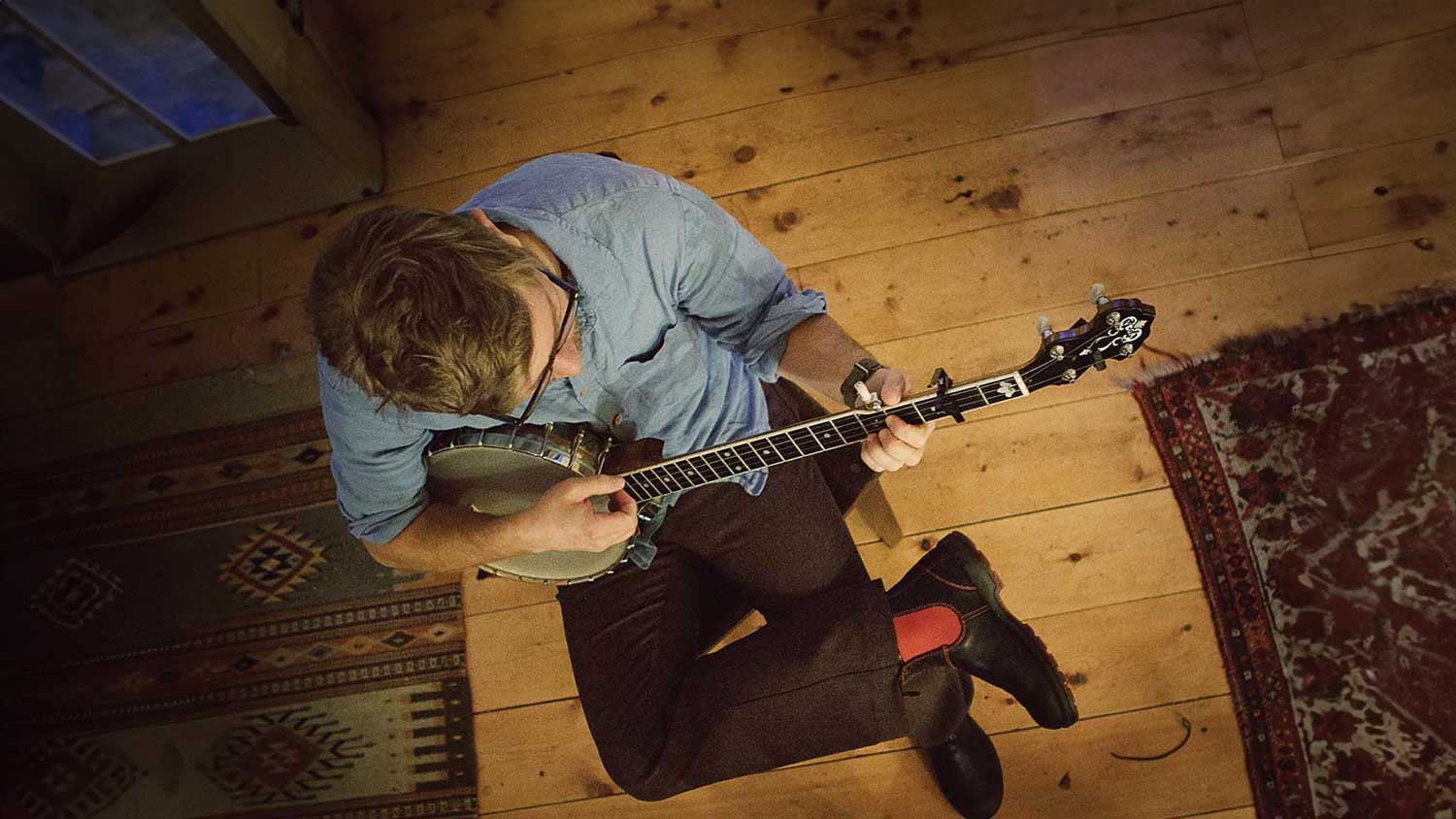
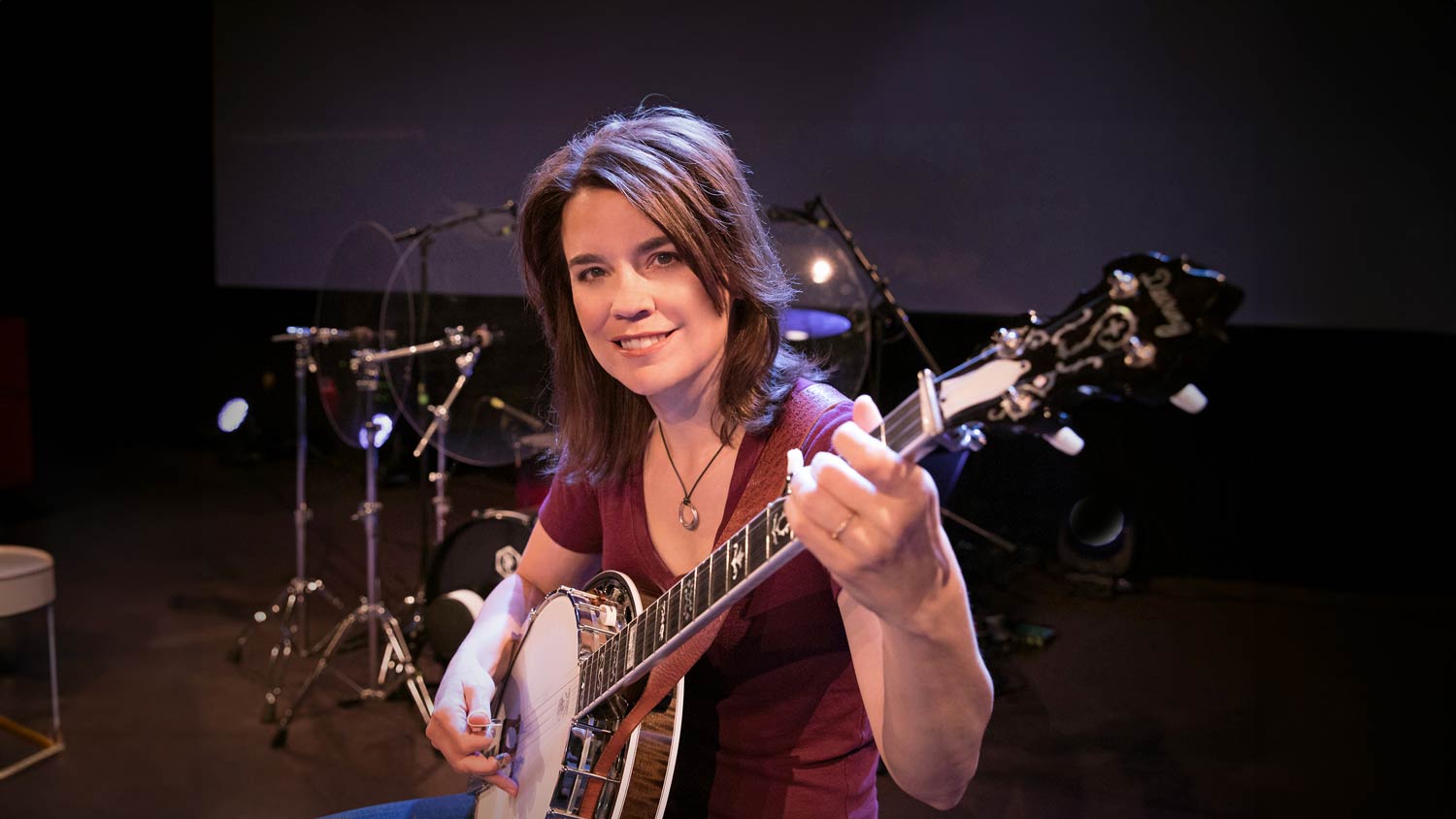

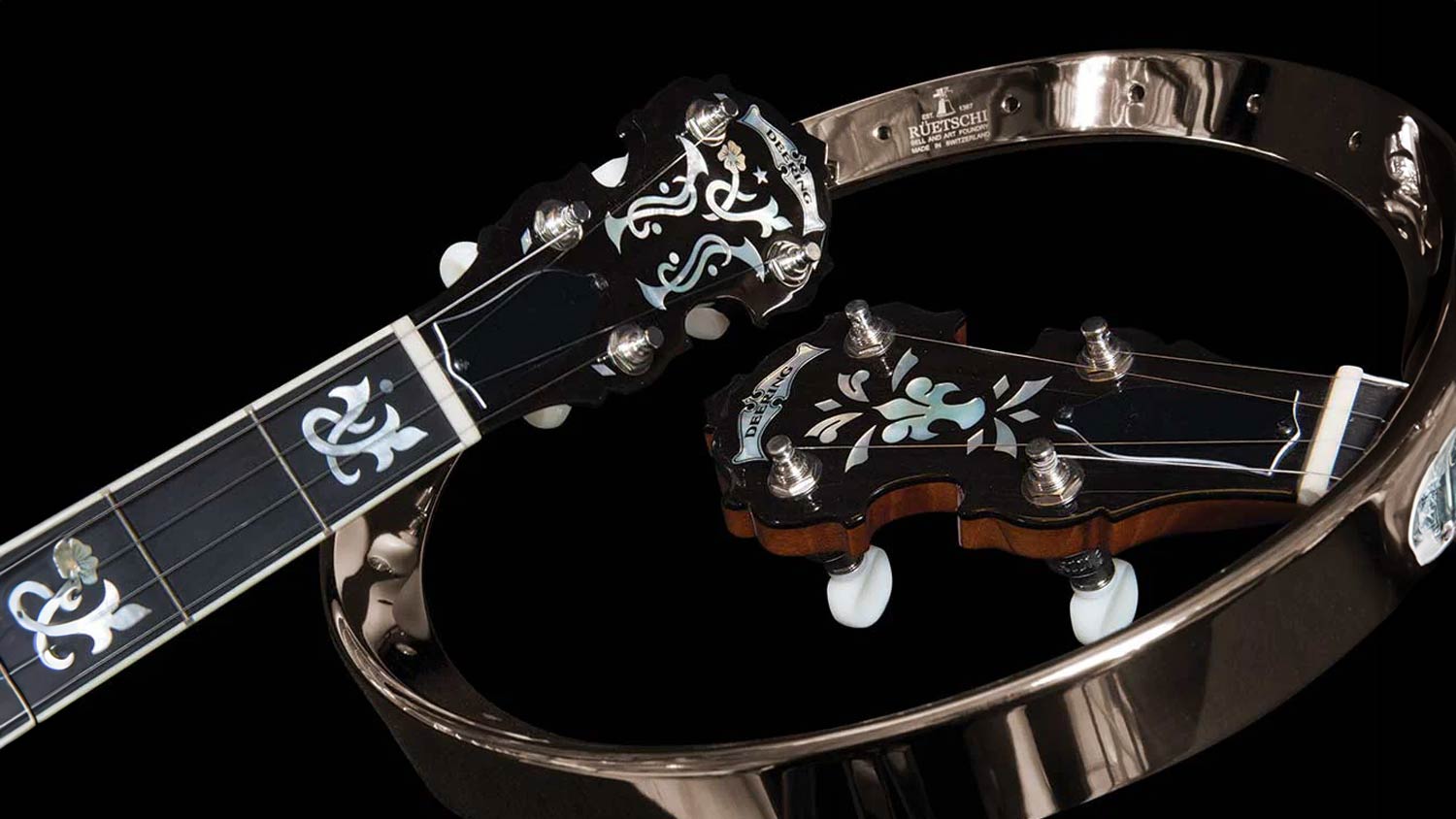

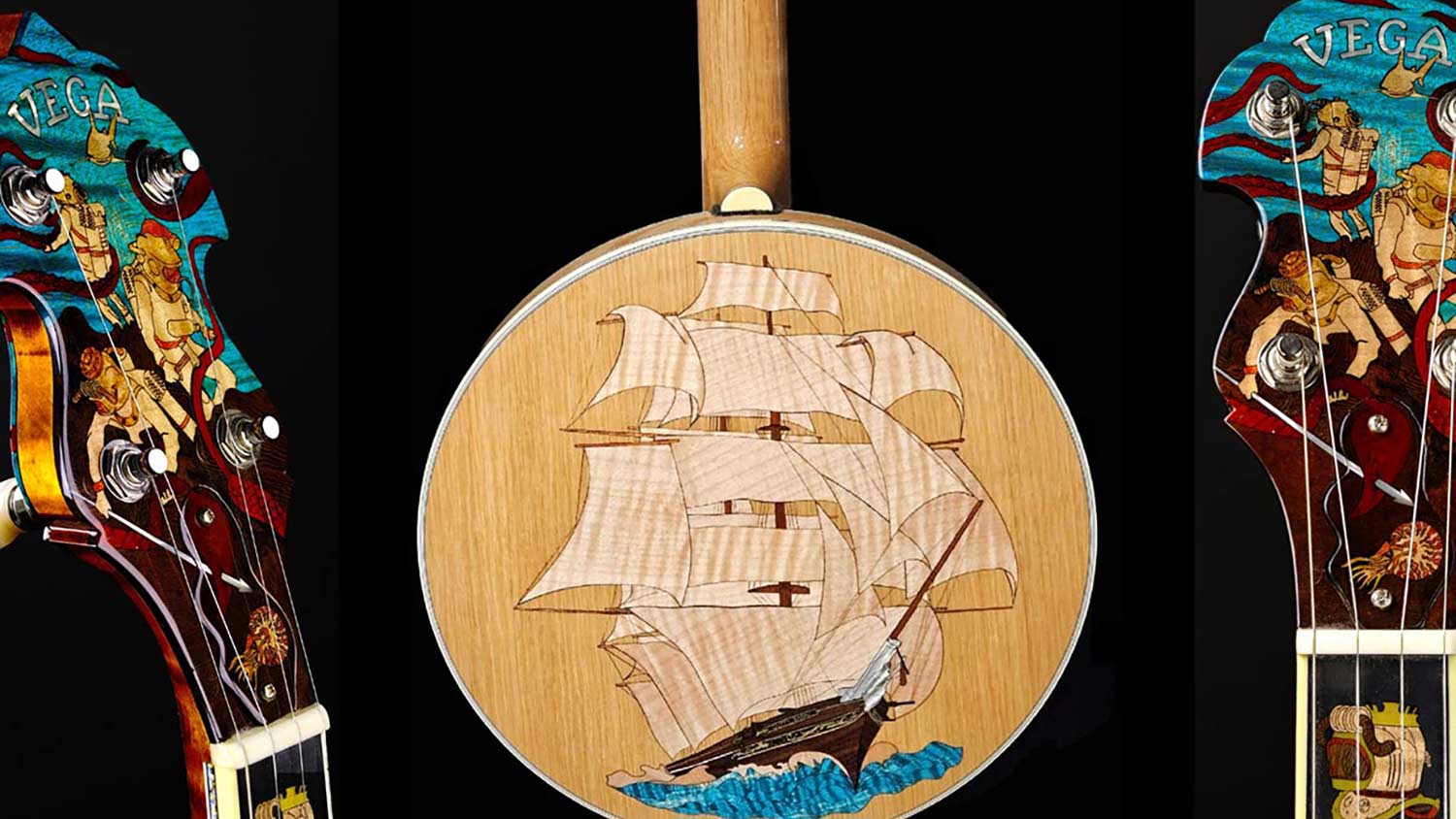





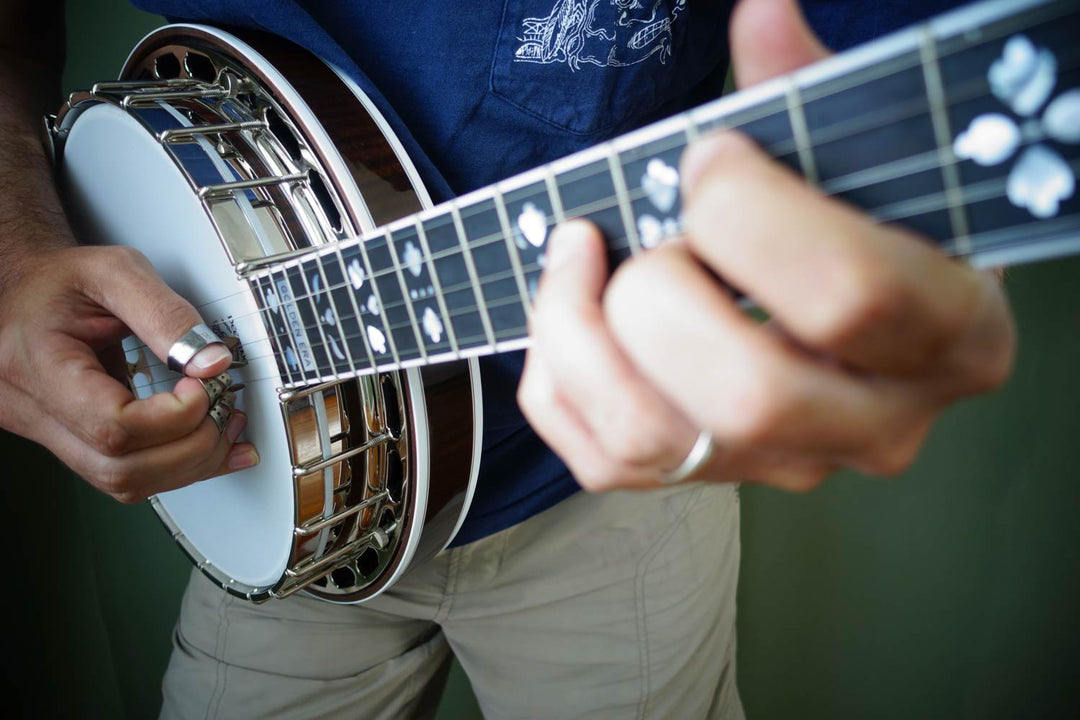
Thanks Paul. The deep resonator Vega Vox is definitely a beautiful sounding banjo. We haven’t been getting very much interest in these instruments. It is possible that when more young players learn to play plectrum banjo, and they start to dig into the history of the plectrum banjo and discover this instrument, the Vox might become more interesting to the banjo world and as we get requests from customers, we’ll look into building them. I do see these in the future. I believe with our all brass tubaphone tone ring, our new building techniques that are super precise, a Deering/Vega Vox could be the greatest banjo of its kind. I hope the pickers of the world embrace this style of banjo. We would love to build it.
Duffy, Thanks for your comments. It’s great to know you’re playing music. Our prayers are with you and medical treatments. Thanks again.
Well, I own 2 banjos a Goodtyme Special, had it for 5 years, and a Goodtime Opeanback I just bought from Jack Hatfield at this home in Sept. Love them both. Well I can’t play very well but and I’m learning all the time.but I do really enjoy love to just enjoy to sit out and solw pick out thru some songr at a slow pace, so’s every one can can just enjoy a slow tune, maybe one finger church music, maybe not even a song just somrthing that sounds like a song, like tonns that go together, but real slow..
Anyway totay I’m going over to Martinbug VA Hosp. seems like I got me a bit os kidney infection to take care of .
God bless ya’ll
Duff & Gall
10/22/2012
PLEASE GET OUT TO VOTE FOR AMERICA
I may have asked before, but any chance of your including a deep resonator plectrum banjo—-like the Vega Vox in your products? The Vox is still the best sound I’ve heard from a banjo, regards from Oz.
I find it very rewarding to play a 5-string with music other than bluegrass-folk or country. People are amazed that it can fit in, but if you play it like an instrument and not try to do Bluegrass rolls… it is very beautiful!
Leave a comment